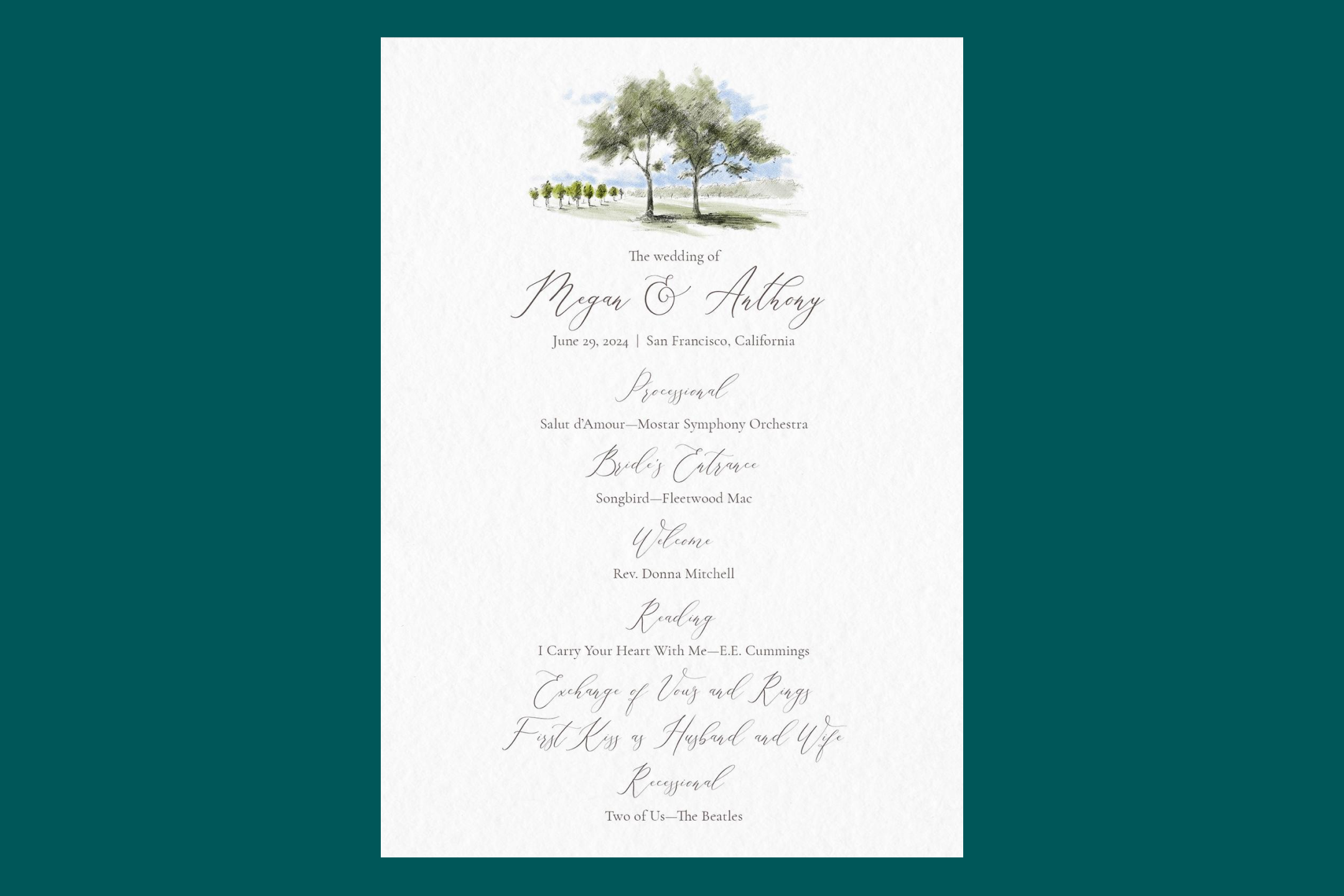- Expert advice/
- Invites & paper/
- Invitations/
- How to Word Traditional Jewish Wedding Invitations
- Invitations
How to Word Traditional Jewish Wedding Invitations
Everything you need to know about sending your Jewish wedding invitations.
Last updated July 1, 2025
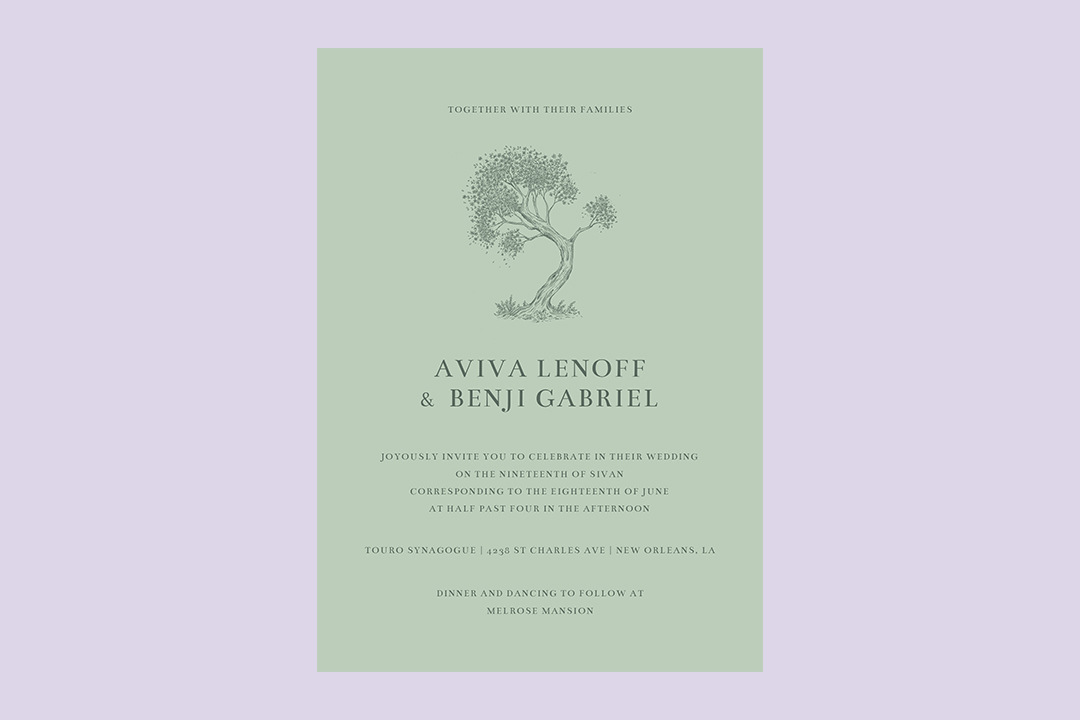
Shop invitations
View allAs they begin to plan their special event, the wedding invitation befuddles many new couples. There are so many options for wording, designs, and flourishes. For Jewish weddings, the invitation represents an additional opportunity to share your Jewish values with your guests and add meaning to your big day. You want the invitation to include all relevant information and convey what this day means to you. Here’s everything you need to know:
Jewish Wedding Invitation Wording
While there are countless ways to phrase a Jewish wedding invitation—and no way to do it wrong—here are some traditional elements:
List the Hebrew Date and Consider Incorporating a Hebrew Translation
It’s tradition to include the Hebrew date of the wedding ceremony on the invitation, which means finding the corresponding date in the Hebrew calendar calendar to the secular date of the wedding.
In some communities, it’s common for the left side of the Jewish wedding card to include all of the information in Hebrew. This is especially common in Orthodox Jewish communities, for Sephardic or Mizrachi couples, or couples with many Israeli relatives. If either party has a Hebrew name, those are typically used on the Hebrew side of the invitation.
Here are two ways one could include the Hebrew date in their Jewish wedding invitation.
(Name of bride/groom)
and
(Name of bride/groom)
Joyously invite you to celebrate in their wedding
On the (day of the month) of (Hebrew month) corresponding to the (day of month) of (secular month)
Or
On the first day of (Hebrew month) (list secular date in parentheses), (bride/groom) and (bride/groom) invite you to witness their marriage under the chuppah
Emphasize Joy and Celebration
While any wording choice is right if it reflects the desire of the couple, the traditional Jewish wedding invitation emphasizes joy and celebration rather than solemnity or formality. For this reason, it’s more traditional to use phrasing such as ‘share in our joy’ rather than ‘request the honor of your presence’ when wording a Jewish wedding invitation.
Use ‘and’ Instead of ‘to’ When Connecting the Names of the Couple
In some communities, it’s standard for wedding party invitations to describe the marriage of ‘X’ to ‘Y,’ but Jewish wedding invitations typically use the word ‘and’ in between the names of the couple.
Including Both Sets of Parents
While the invitation should be issued in the name of the host, following the general etiquette of wedding day invitations, the names of both sets of parents should be mentioned on the invitation. This emphasizes the familial unity of the new couple and celebrates the role of the family in the celebration.
(Parents of groom)
Request the pleasure of your company at the marriage of their daughter (bride’s name) and (groom’s name)
Son of (parents of groom)
Or
Together with their parents, (name of bride/groom) and (name of bride/groom) joyously invite you to celebrate their wedding day on the first of (Hebrew month), corresponding to (secular date).
Consider Including the Time of the Chuppah or Other Specific Rituals
Most Jewish weddings begin with a cocktail hour, which is often referred to as the smorgasbord, before the ceremony, often referred to as the chuppah. In traditional Jewish weddings, there will also be a ceremony before the chuppah known as the Bedeken, where the couple will see one another for the first time that day (or even week). As a result, some Jewish wedding invitations specify both the time the wedding event begins and also the time of the chuppah, or other ceremonies, so guests don’t miss these crucial moments. This will often be on the line after the time.
Religious Phrasing and Religious Quotes
Depending on the Jewish community and level of observance of the couple, there are many options for what sort of phrasing a couple might want to include on their wedding invitation. Some wedding invitations will open with traditional language expressing gratitude to God, or using Hebrew terms. A very traditional Jewish wedding invitation might include the three Hebrew letters of beit, samech, and dalet in the upper-righthand corner, to signify divine approval of the invitation.
For many couples, a Bible verse or Hebrew divine name adds a spiritual element to the invitation. Some observant Jewish couples might refrain from including religious quotes or writing the name of God in Hebrew, as there are communities that believe such additions would make the invitation a sacred document—something that cannot be thrown away.
Options for Traditional Jewish Invitation Wording
With joy in our hearts, we invite you to share in our Simcha.
With gratitude to Hashem, (name of parents) invite you to the wedding of (name of couple).
It is with profound joy and gratitude to God that we invite you to witness the marriage of (name of couple).
(Names of both sets of parents) invite you to celebrate in the Simcha of our children’s wedding.
Options for Jewish Wedding Invitation Quotes
The inclusion of a bible verse or Jewish quote is an increasingly common way for a couple to express their Jewish values and add a note of depth to their Jewish wedding invitation. Some couples might include the verse in the original Hebrew or consider a variety of English translations before choosing the translation that best captures their intention. Bible books with both Jewish and Christian titles should use the Jewish title. For example, a verse from Song of Songs should avoid attributing the verse to Song of Solomon, which is a Christian name for the biblical book.
Here are some traditional scriptures to include in your Jewish wedding invitation.
“I am my beloved’s, and my beloved is mine.” (Song of Songs 6:3)
“I have found the one in whom my soul delights.” (Song of Songs 3:4)
“And again it shall be heard in the cities of Judah and in the streets of Jerusalem, the voice of joy and the voice of gladness, the voice of the groom and the voice of the bride.” (Jeremiah 33:10-11)
“It is not good for the man to be alone.” (Genesis 2:18)
"A husband and wife are one soul, separated only through their descent to this world. When they are married, they are reunited again." (The Zohar, I91a)
Jewish Invitation Designs
There are many Jewish symbols to consider when designing a Jewish wedding invitation, as well as a variety of design elements.
Jewish Symbols to Consider
Jewish Stars
The six-pointed Jewish star is a traditional Jewish symbol that looks great on invitations
Tree of Life
A Tree of Life is a popular symbol for Jewish wedding invitations, as the tree represents both the deep roots of the Jewish tradition and the flourishing branches of future generations that will hopefully emanate from the couple.
Rainbow
The rainbow is another popular symbol on Jewish wedding invitations, in reference to the covenant of Noah in Genesis. This is particularly common for LGBTQ weddings, where the rainbow can both reflect the divine promise of protection and the pride flag.
Hebrew Calligraphy
The use of Hebrew calligraphy to decorate the invitation is another beautiful way to add a Jewish element to the wedding invitation. A couple might choose to have the initials of their name rendered in Hebrew calligraphy.
Cup of Wine
The Jewish tradition is full of comparisons between love and wine, and wine is a central aspect of the wedding ritual. The smashing of the glass is also a well-known aspect of the Jewish wedding ceremony. When choosing an invitation with a lattice or lace overlay, a couple might choose a cup of wine pattern.
If your Jewish wedding invitation will have both English and Hebrew wording, then make sure someone who knows Hebrew reviews the text and design for accuracy before it’s approved—and be sure to choose a design with enough space for all of the text.
The traditional Jewish wedding invitation is an exciting opportunity for a couple to frame their wedding planning and share relevant information with guests. This is everything you need to know before designing your traditional Jewish wedding invitation.
Shop invitations
View allUp next for you

8 Ways to Keep Family Involved in Wedding Traditions During the Ceremony
List
Including family and loved ones in wedding traditions can be tricky, but there are ways that they can still be a part of the big day. Read on for more!
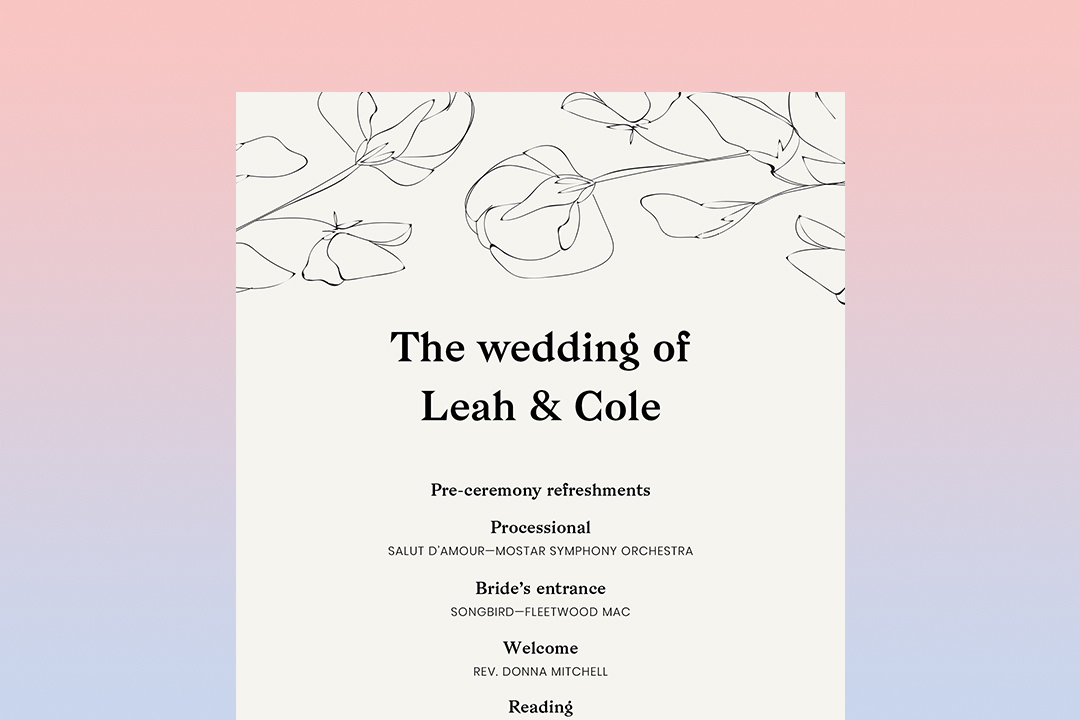
A Guide to Wedding Ceremony Programs
Inspiration
Wedding ceremony programs communicate valuable information to your guests about your ceremony service—find out all you need to know to choose, word, and personalize your wedding programs.
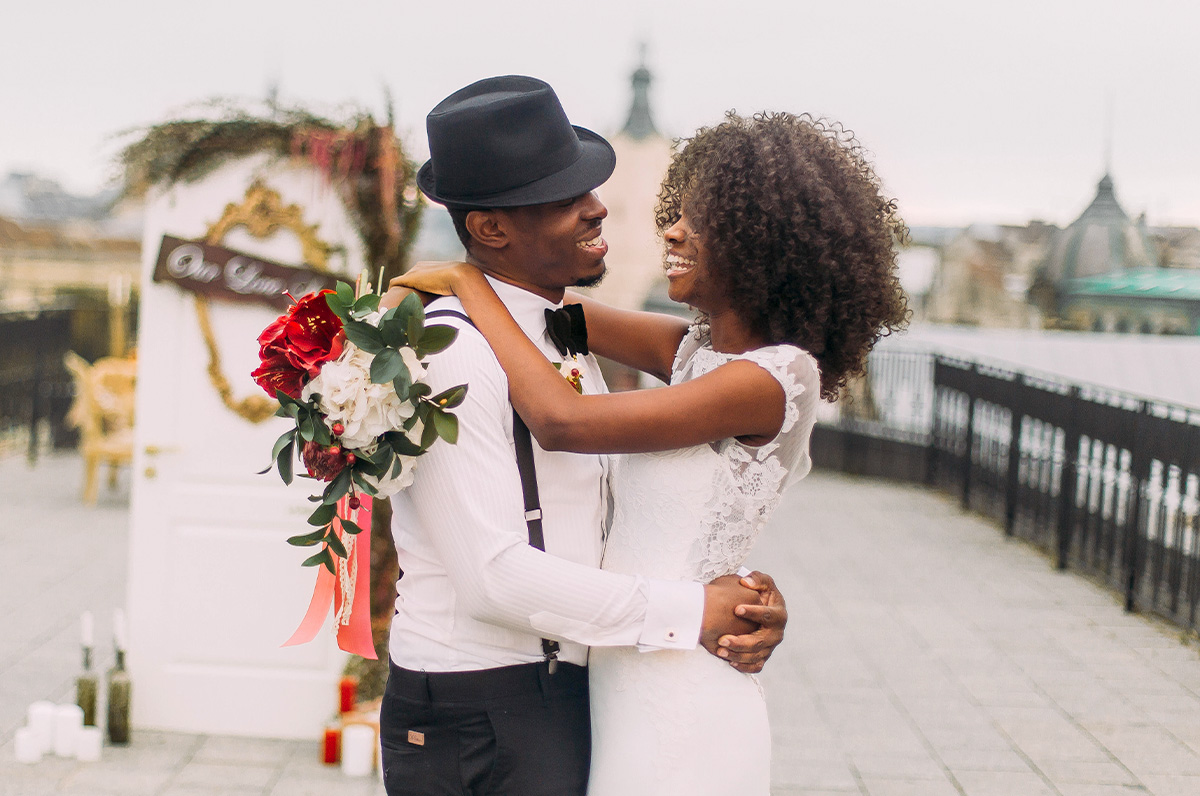
A Guide to Wedding Vows
Inspiration
Learn all you need to know about wedding vows and use our flowchart to determine whether you should write your own—plus find tons of examples of traditional vows to inspire you.

Traditional Wedding Vows for the Timeless Couple
How-To
Looking to recite traditional wedding vows on your special day? Read on for tips and examples from the Zola team.
Featured

7 Tips for Merging Cultures in a Multicultural Wedding
List
It's not easy to merge cultures, traditions, and families for a multicultural wedding. Here are expert tips on blending two or more cultures for your wedding day.
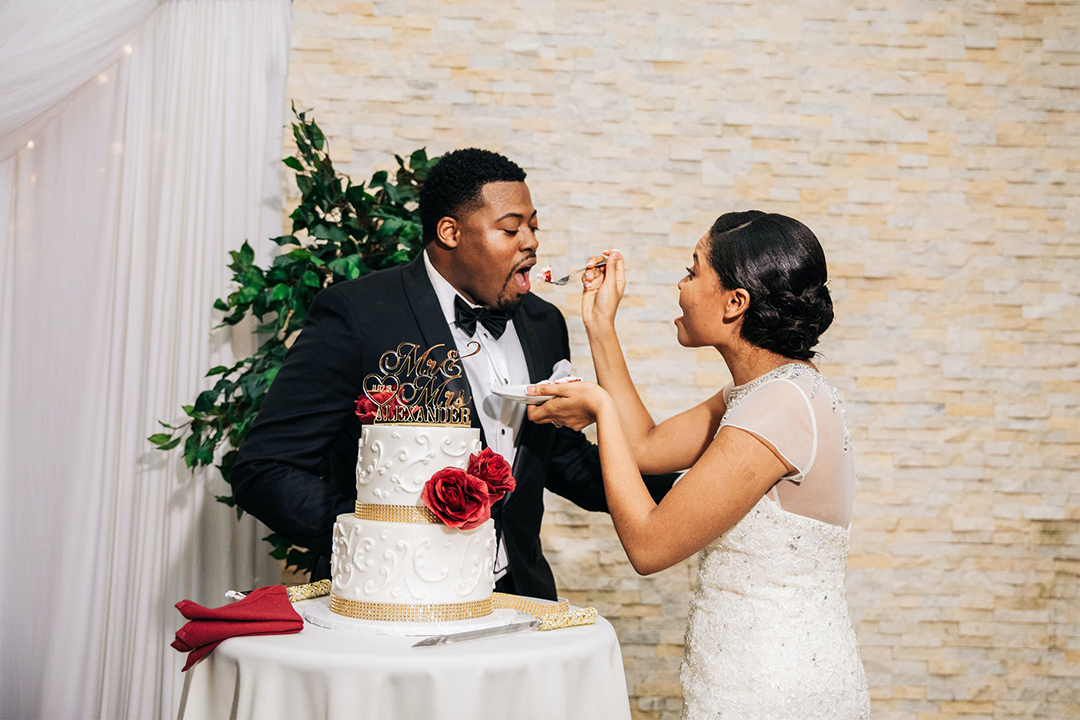
15 Wedding Cake Traditions and Their Significance
Advice
Find out everything you need to know about wedding cake traditions from the experts at Zola! Read on to find out more.
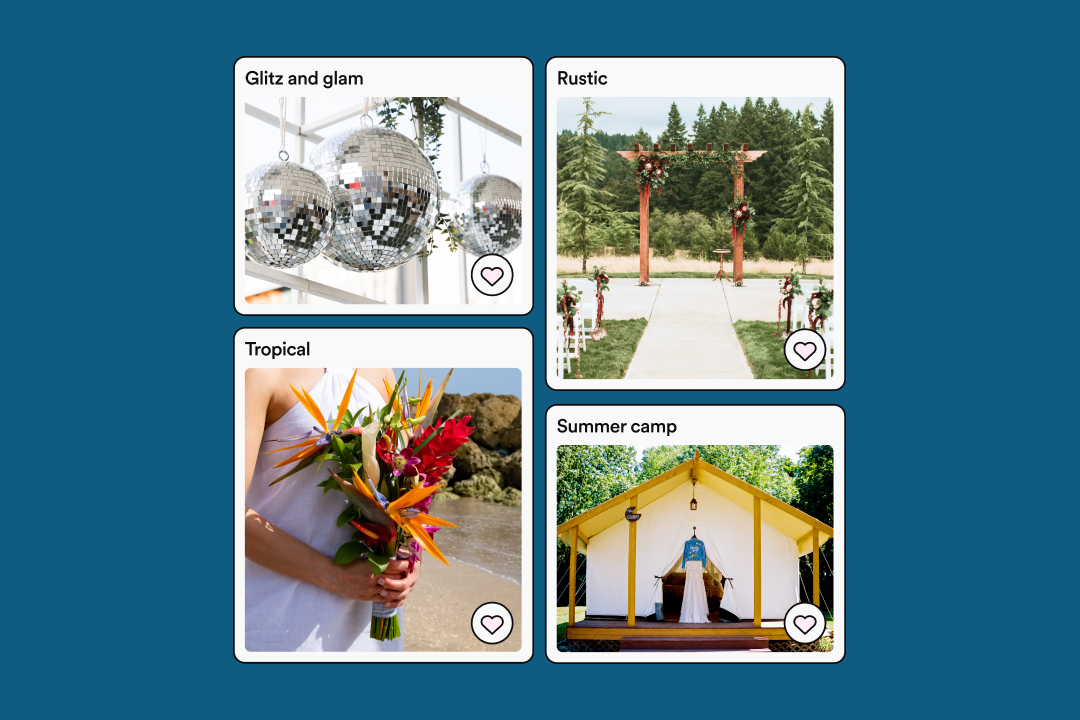
75 Wedding Themes to Inspire Every Type of Couple
Wedding Style
Looking for wedding themes to suit your personality and style? Zola has you covered with 75 of the best wedding theme ideas from classic to artsy to seriously unique.
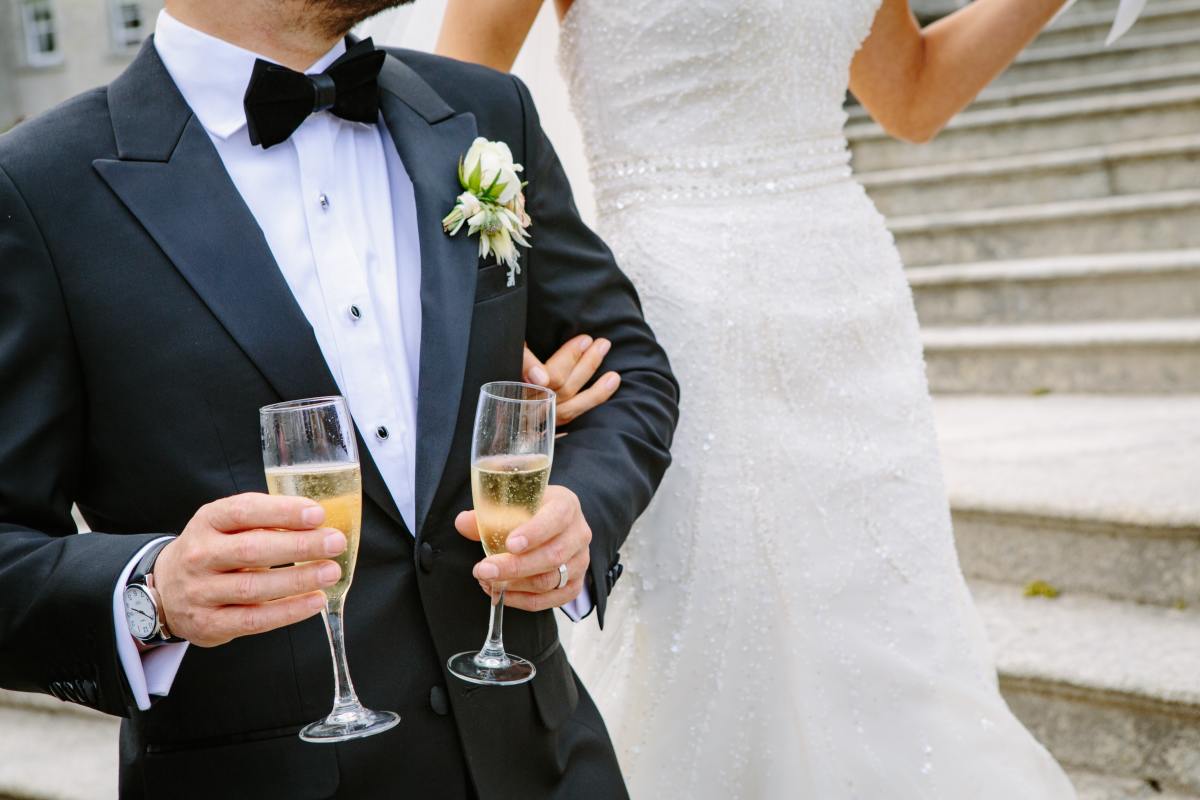
How to Plan a Dry Wedding + Tips
How-To
Planning a dry wedding might seem challenging—but it doesn't have to be! Expert wedding planners share their tips for planning a fun, memorable, alcohol-free wedding.
- Expert advice/
- Invites & paper/
- Invitations/
- How to Word Traditional Jewish Wedding Invitations
Find even more wedding ideas, inspo, tips, and tricks
We’ve got wedding planning advice on everything from save the dates to wedding cakes.
